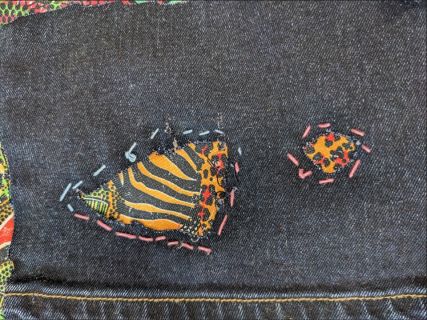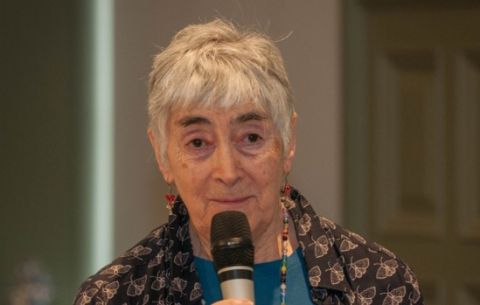How does learning to sew help us to live more sustainably?
by Rachael Boon.
Sewing has long been my passion. Over the past number of years, I have collected a plethora of sewing skills from the many bloggers, social media influencers and television programmes that have promoted this ancient, domestic craft. I have also become increasingly concerned about issues around sustainability and climate change. This has led me to reflect on the things we consume as a society, including fast fashion. So how can sewing skills mitigate our effect on the planet and help us to live more sustainably?
It will come as no surprise that our obsession with fast fashion is having a directly negative impact on our planet. Despite increased awareness of the fashion industry’s dark side, including the 2013 Rana Plaza factory collapse and images of landfills groaning with discarded clothing in Ghana, not much has changed. According to Greenpeace over 100 billion clothes are made every year. This is detrimental to the environment as:
- The process of growing and creating raw materials involves pesticides, water pollution and exploitation of farmers,
- Creating yarns and fabric uses up vast amounts of energy from fossil fuels,
- Dyeing and processing fabric emits toxic chemicals into the environment,
- The distribution of clothing contributes to increased carbon emissions,
- Many clothes are sewn in sweatshops with technicians working in dangerous conditions for low wages,
- When clothes are discarded, they often end up in landfill or incinerators.
Much of the fashion industry’s response to its negative press has been to ‘greenwash’ business practices. This involves clothing companies claiming to be environmentally friendly by advertising its use of organic materials, ethical production practices, and carbon offsetting, among others. The truth is that the industry’s supply chain and processes are so convoluted that on closer scrutiny, many businesses cannot live up to the claims they make. The bottom line is this: profit is made through producing and selling more stuff. Producing more stuff will always have a negative impact on the planet. To live more sustainably we need to buy fewer clothes.
This is where learning to sew becomes an important skill in our fight against climate change. Sewing is a useful skill as it means:
- We can mend clothing, sewing on buttons or stitching up holes,
- We can adjust clothing to fit us perfectly, taking in seams at the waist or hemming up skirts and trousers when they’re too long,
- We can customise and upcycle clothing to give it a new lease of life, so we don’t grow bored and throw it away,
- We can examine our clothes more carefully and learn to appreciate the workmanship that’s gone into creating them,
- We can practice mindfulness, doing something which is slow and calming, thus reducing stress.
I first began sewing as a child and found that it was a fun, creative and relaxing hobby. Back in 2005, I was lucky enough to learn sewing at school with a fantastic Textiles teacher. These days, however, many students are not studying practical subjects such as sewing in favour of more academic subjects like Maths. This is why MEEN is now running some afterschool workshops in Manchester to teach primary school pupils how to sew.
During these workshops, (which are a part of MEEN's More haste less waste project) I have shown pupils examples of clothing which were collected from charity shop rag buckets due to defects such as stains, holes, and missing buttons. Many of these clothes would have ended up in landfill. With a little imagination and some sewing skills, however, we can give clothes a longer life and have some fun along the way.
As an example, this is a men’s shirt which was destined for the rag bucket. I loved the plaid pattern, and the collar was very well-crafted. I decided to turn it into a top and skirt that I could wear together as well as separately.


I unpicked the patch pocket and added some extra contrasting fabric to the top to lengthen it and add some interesting detail. I then reattached the pocket to link the fabrics together. I cut the sleeves off and used the fabric to make a waistband for the skirt. Using a sewing machine made the process faster so the whole thing came together in one Saturday afternoon.
This is just one example of many projects I have done to repair or upcycle old clothes. In my own small way, I feel that I am doing something to keep these clothes from rotting for centuries in landfill and polluting the environment.
So, my message is this: sewing is a great activity for anyone who cares about the environment and wants to make a small difference. The more we can learn to repair and renew our clothes, the more we can do for our planet.
Beehive: the MEEN newsletter
Beehive provides information about up and coming events and opportunities, runs stories from Manchester schools to inspire good practice, reviews up to date teaching resources and lists training opportunities.
Contact us
Tel: 07505172335
Email: click to email us
MEEN, Bridge 5 Mill, 22a Beswick Street, Ancoats, Manchester M4 7HR






